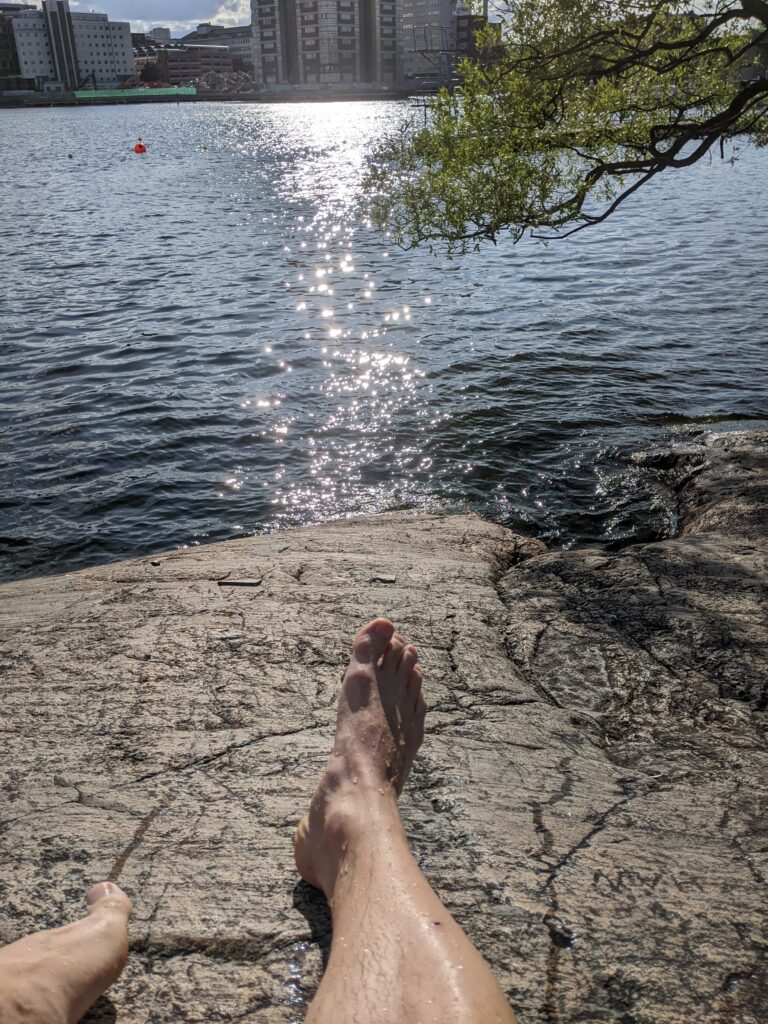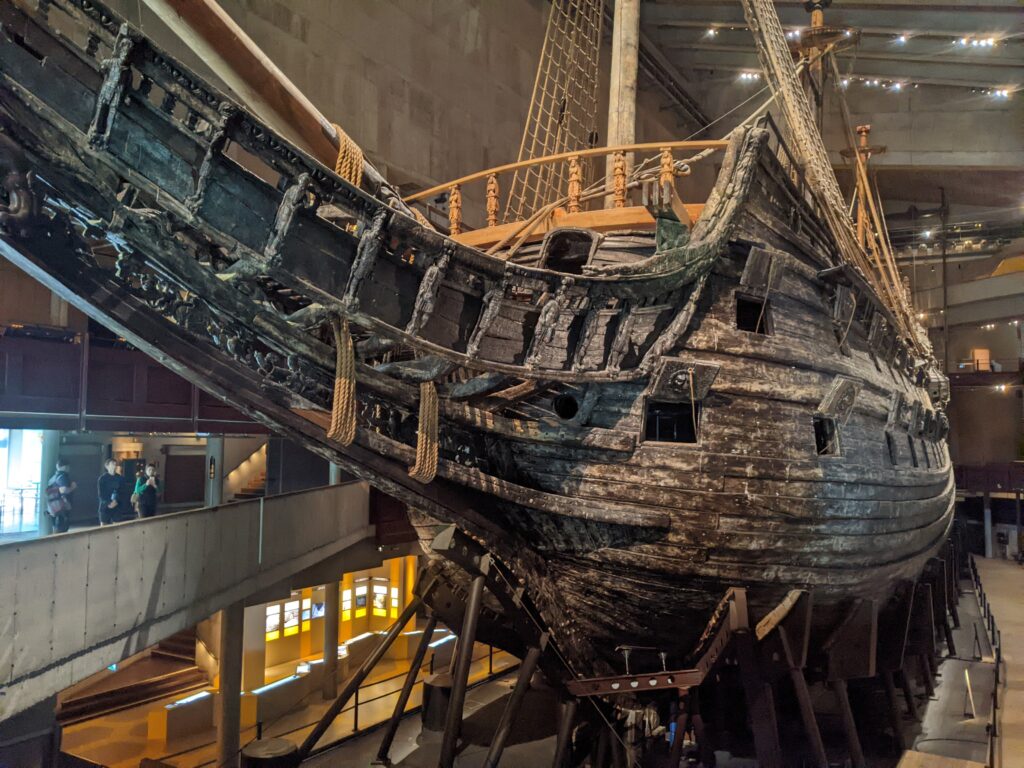I’m in Stockholm, staying in an apartment on Sodermalm, an island neighbourhood full of hipster cafes and vegan t-shirt shops in the centre of the city. In 35 minutes bike ride I can get to a national reserve outside the city, and I love the granite covered in mixed forest alongside lakes and rivers full of fresh water. The Swedes are found swimming in this city even when it is only 20 degrees and grey outside. The other morning I was walking into town along the water front. In the grey light of the cool morning I noticed the head of an elderly woman bobbing through the water to my right. Only in Stockholm…
My favourite building here is the city hall. The hall and tower has a design influenced by the Doge’s Palace in Venice, but the columns are a massive, heavy carved granite, speaking of the rugged strength of the cold North. The city in general has clean air and no tourist crush. The place feels civilised, and has some beauty in its water side location on 14 islands connected by 50 bridges. The side of the island I am on is brushed by fresh water, which is a relief after being accustomed to only ever swimming in salt water where I live in Perth.













I went to see the Vasa the other morning. Arrived early to be sure that there were not many people. The ship rears out of the dimness like a black ghost ship in a fog, complete with grinning lions carved in the ancient timbers, slack shrouds on the decks, and a 600 tons of oak ship of the line from another century and another world. This is one of the most impressive objects you can see in any museum in the world. A war ship from the 1600s, almost entirely intact and complete. Walking around the hull and looking up the intricacy and inventiveness of the dark oak carvings is a pleasure. I walked to the back of the ship and looked up, imagined bobbing in a little row boat on the water as the Vasa, in 1628, moments before she sank to the bottom of Stockholm harbour on her maiden voyage, moved past me. I thought of how much the viewer would have been over-awed by the majesty of this royal ship of the line and her ornate carvings on her stern and taffrail: Nordic wildmen, roman emperors, snarling lions, and open jawed monsters, light glistening off the 700 carvings of the ship as she headed for the sea. Or another image: imagine scuba diving on the wreck before it was raised in 1961 to a crowd of thousands, and seeing the grinning skull of a sailor in the dimness and grime of the darkened gun deck, submerged in 30 metres of fresh water. As I say, this easily one of the most impressive objects in any museum on earth. The Vasa, the world’s most complete ship wreck from the 1600s, has become a symbol of the low gone glory of Sweden’s seventeenth century empire around the Baltic.

